In the world of gardening, organic mulch plays a pivotal role in nurturing a thriving garden. It’s more than just a layer on the soil; it’s a powerhouse of benefits for your plants.
This article aims to be your comprehensive guide on how to prepare and use organic mulch effectively. By delving into the types, benefits, and application techniques of organic mulch, you’ll unlock the secrets to maintaining moisture, suppressing weeds, and enhancing soil health.
Follow this guide, and witness the transformation in your garden’s health and productivity—a testament to the wonders of organic mulching.
What is Organic Mulch?
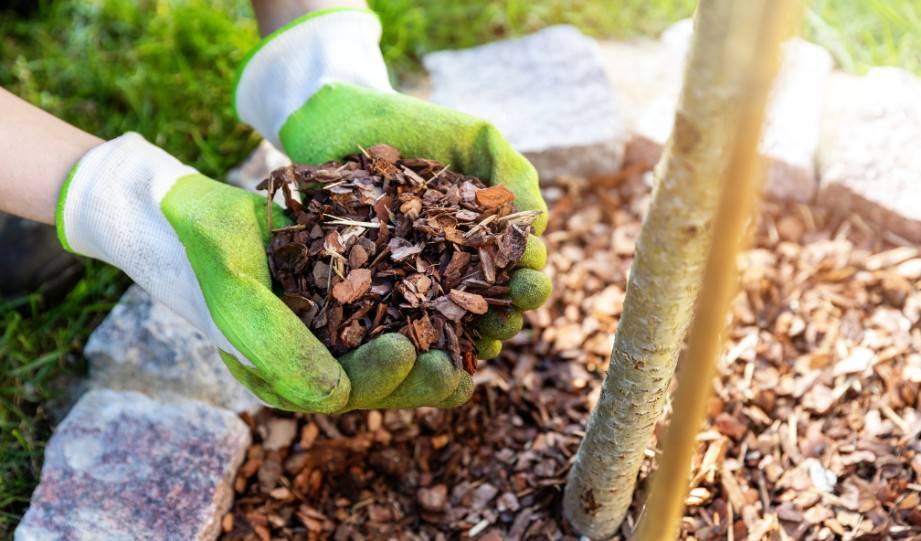
Organic mulch refers to any natural material spread over the surface of soil to protect, insulate, and enrich it. Common types include leaves, straw, wood chips, and grass clippings.
Its primary role in the garden is to maintain soil moisture, regulate temperature, suppress weeds, and enhance soil fertility over time as it decomposes. This process of decomposition adds vital nutrients back into the soil, promoting healthier plant growth.
By using organic mulch, gardeners can create a sustainable, eco-friendly environment that supports both the immediate needs and long-term health of their gardens.
Benefits of Organic Mulch
Organic mulch offers a multitude of benefits for any garden, acting as a catalyst for healthier soil and plants.
One of its primary advantages is moisture retention. By covering the soil, organic mulch reduces evaporation by 40-90%, keeping the soil moist even during dry spells. This means less watering is needed, conserving water and saving time.
Temperature regulation is another significant benefit. Mulch acts as an insulating layer for the soil, keeping it cooler on hot days and warmer when it’s cold.
This stability is crucial for the development of plant roots and can extend the growing season for many types of plants.
Soil fertility is also greatly enhanced through the use of organic mulch. As it breaks down, it adds organic matter to the soil, improving its structure and nutrient content.
This natural enrichment supports vibrant plant growth and increases the soil’s ability to retain nutrients and water, making your garden more sustainable and eco-friendly.
Weed suppression is another key advantage. A layer of organic mulch can effectively block light from reaching weed seeds, significantly reducing their ability to germinate.
This means less weeding, which saves time and reduces the need for chemical herbicides, contributing to an environmentally friendly gardening practice.
Types of Organic Mulch
Organic mulch comes in various types, each with unique benefits for the garden.
Straw Mulch
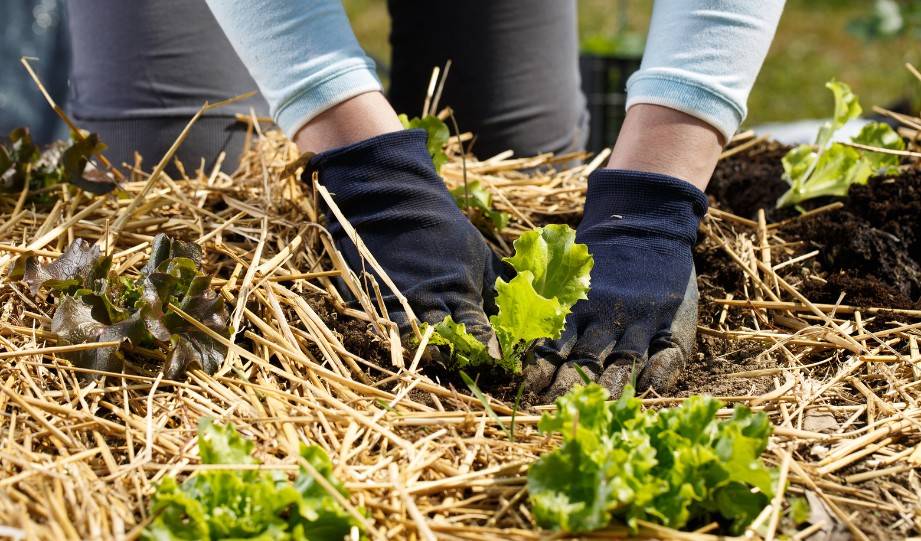
Straw mulch is lightweight and excellent for vegetable beds, improving moisture retention and adding organic matter as it decomposes.
However, it’s important to ensure the straw is seed-free to avoid introducing weeds.
Wood Chips

Wood chips are a popular choice for ornamental areas and pathways. They break down slowly, providing long-term soil cover and gradually enriching the soil with nutrients.
Wood chips also give the garden a neat, cohesive look but should be used with caution around young plants due to their potential to draw nitrogen away from the soil as they decompose.
Leaves
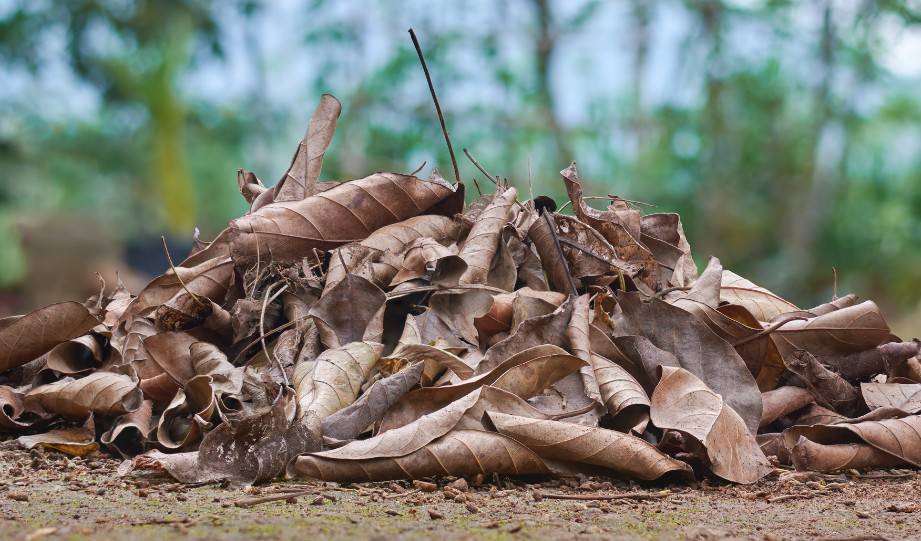
Leaves, readily available in the fall, are a cost-effective mulching option. They should be shredded before application to prevent matting, which can suffocate the soil.
Leaf mulch enriches the soil with nutrients and improves its structure as it breaks down.
Grass Clippings
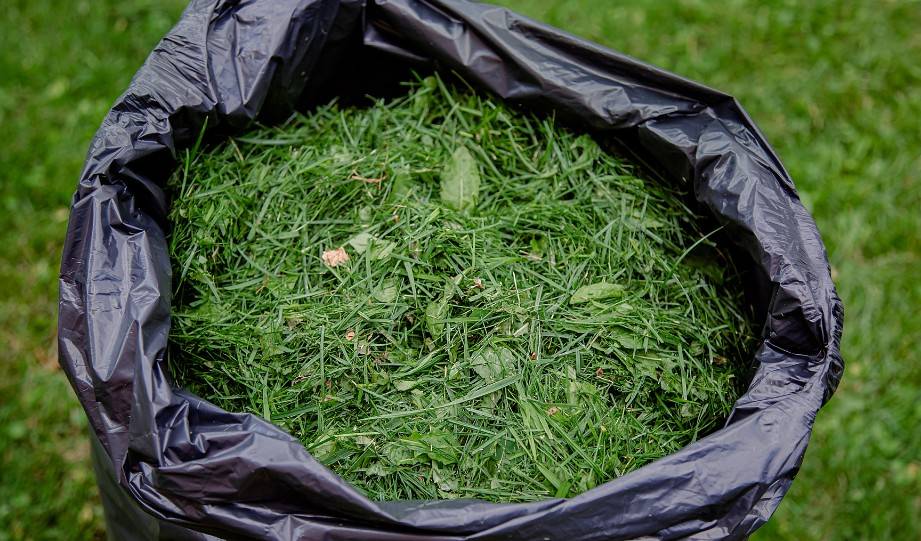
Grass clippings can be used as mulch around vegetables and flowers, offering excellent moisture retention and weed suppression. However, they should be applied in thin layers to prevent matting and odor issues.
Also, avoid using clippings from lawns treated with herbicides, as they can harm your plants.
How to Choose the Right Type of Organic Mulch for Your Garden
Choosing the right type of organic mulch for your garden hinges on understanding the unique needs of your plants and the characteristics of your soil. Here’s a straightforward guide to making the best choice:
For gardens with a variety of perennials or trees, wood chips or bark mulch can be ideal. These materials break down slowly, providing a stable environment and enhancing soil structure over time.
They’re especially beneficial in improving the fertility of sandy soils, which struggle to retain moisture and nutrients.
If you’re cultivating a vegetable garden or annual flower beds, consider using straw or grass clippings. These materials decompose quicker, adding essential nutrients back into the soil more rapidly, which is crucial for the fast-growing nature of annual plants.
Additionally, they help maintain the soil’s moisture balance, crucial for seed germination and root development.
For those with clay soils, leaf mulch or finely shredded bark can help break up the density, improving aeration and drainage.
This type of mulch encourages root growth by preventing soil compaction, a common issue in clayey environments.
Remember, the goal is to match the mulch to both your garden’s aesthetic and functional needs.
Consider the longevity of the mulch, its nutrient contribution, and how it will interact with your soil type to create the ideal growing conditions for your plants.
By aligning the mulch type with your garden’s specific requirements, you can maximize the benefits of organic mulching for healthier soil and more robust plant growth.

Read More:
Preparing Organic Mulch for Your Garden
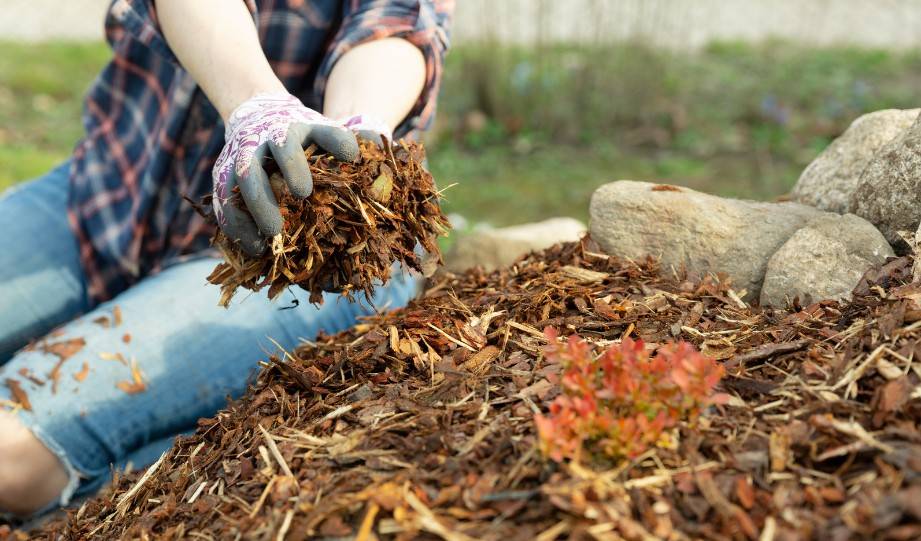
Preparing organic mulch for your garden starts with the collection and proper preparation of materials. Each type of mulch—straw, wood chips, leaves, and grass clippings—has its collection method and preparation steps.
Straw: Purchase straw bales from a local farm or garden center. Ensure it’s seed-free to prevent unwanted weeds. Break the bales apart gently before spreading.
Wood Chips: Often available from local tree services or municipal green waste programs, wood chips should be aged or composted for a few months before use to avoid nitrogen depletion in the soil.
Leaves: Collect fallen leaves in autumn. Shred them with a mower or leaf shredder to prevent matting, which can suffocate the soil. Shredded leaves decompose faster, enriching the soil with nutrients.
Grass Clippings: After mowing your lawn, collect the clippings. Allow them to dry slightly to prevent odor and matting. Use untreated grass only to avoid chemical contamination of your garden beds.
Applying Organic Mulch in Your Garden
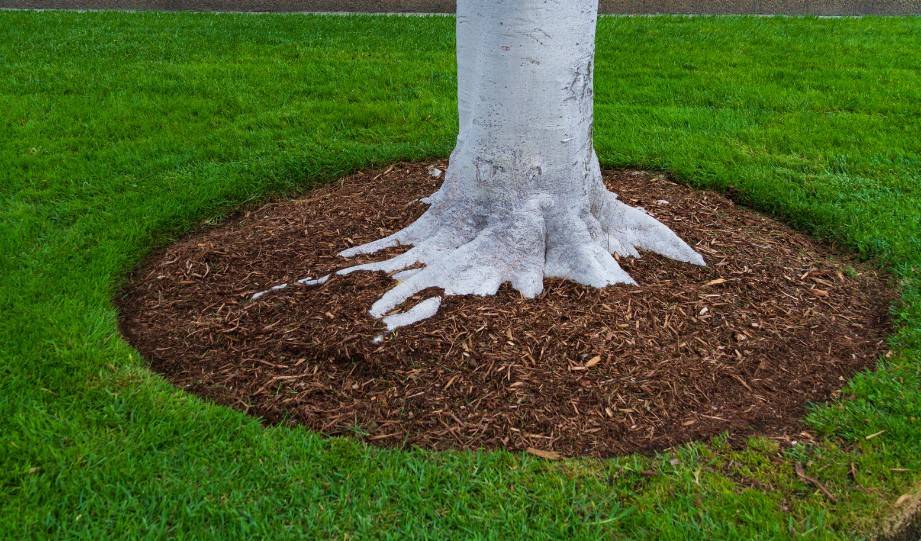
Applying organic mulch to your garden is a straightforward process that can significantly benefit your plants and soil. Here’s a step-by-step guide to ensure you do it effectively:
1. Clear the Area
Start by removing weeds and debris from the area you plan to mulch. This prevents weed growth and ensures the mulch can directly benefit the soil.
2. Soil Preparation
Water the soil if it’s dry. Mulch holds moisture in the soil, so starting with moist soil ensures your plants won’t suffer from drought.
3. Application Timing
For vegetable gardens and annuals, wait until the soil has warmed in the spring. For perennials and trees, mulch can be applied in early spring as they’re less sensitive to soil temperature changes.
4. Applying the Mulch
Spread the mulch evenly around plants and across beds, maintaining the recommended 2 to 4 inches thickness. Avoid piling mulch against stems and trunks to prevent rot.
5. Water the Mulch
Lightly water the newly applied mulch to help it settle and start the process of slowly breaking down to enrich the soil.
Seasonal Mulch Maintenance
Maintaining organic mulch through the seasons is crucial for sustaining garden health and productivity. Here’s how to manage your mulch year-round:
Spring: As temperatures rise, check the mulch for compaction or thinning areas. Spring is an ideal time to fluff mulch to ensure proper air circulation and add a fresh layer if necessary.
This is also the moment to switch from winter to summer mulch if you’re using a seasonal strategy, especially in vegetable gardens, to help warm the soil.
Summer: The main goal during summer is to conserve moisture and keep soil temperatures steady.
Ensure the mulch hasn’t thinned out and is maintaining the 2 to 4 inches depth to protect against the intense summer heat.
Water your mulch lightly during dry spells to keep it effective in moisture retention.
Fall: Prepare your garden for cooler weather by checking the mulch’s condition.
Fall is a good time to add a fresh layer to protect plant roots from temperature fluctuations and to insulate perennial and bulb beds before winter.
Winter: Before the first freeze, ensure your mulch is in good condition to provide an insulating layer for your plants.
However, be cautious not to over-mulch, as too much can lead to excessive moisture retention during winter, potentially harming plant roots.
Refreshing mulch layers should be done as needed, depending on the mulch type and your garden’s specific conditions.
Typically, an annual checkup and refreshment are sufficient for most gardens.
Following these seasonal maintenance tips ensures your garden remains protected and vibrant throughout the year.
Tips for Effective Mulching
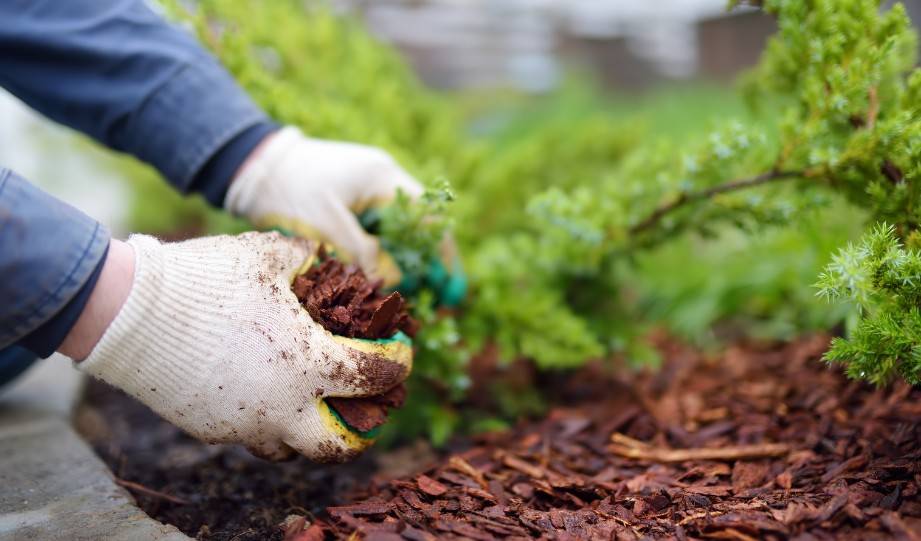
For effective mulching, applying the right amount is crucial. A general rule is to spread mulch 2 to 4 inches thick. This thickness is optimal for retaining moisture, regulating soil temperature, and suppressing weeds without suffocating the soil.
However, avoid piling mulch against plant stems or tree trunks, as this can encourage rot and pest infestations.
Focus mulching efforts on all garden areas, including vegetable beds, flower borders, and around trees and shrubs.
In vegetable gardens, apply mulch after the soil has warmed up to avoid hindering the growth of warm-season crops.
For perennials and annuals, mulch after planting to help maintain soil moisture and reduce weed competition.
Remember, the key to effective mulching lies in consistent application and mindful attention to the specific needs of different garden areas, ensuring a healthy, vibrant garden ecosystem.
Common Mistakes to Avoid
When applying organic mulch, avoiding common mistakes can make a significant difference in the health and productivity of your garden. Here are a few pitfalls to watch out for:
Over-Mulching
Applying too much mulch can suffocate plant roots, leading to poor air circulation and waterlogging.
Stick to the 2 to 4 inches guideline to ensure your garden reaps the benefits without the risks.
Mulch Volcanoes
Piling mulch high against tree trunks, known as mulch volcanoes, can cause bark rot and invite pests and diseases.
Always keep mulch a few inches away from tree trunks and plant stems.
Ignoring Soil Type
Not considering your soil type when choosing mulch can lead to problems.
For example, heavy mulches on clay soil can exacerbate water retention issues, leading to root rot. Select mulch that complements your soil’s characteristics.
Using Contaminated Materials
Be wary of using grass clippings or leaves that may have been treated with pesticides or herbicides. These chemicals can harm your garden plants and soil microbiome.
Always use clean, untreated materials for mulching.
Conclusion
In this guide, we’ve explored the benefits of organic mulch, including moisture retention, temperature regulation, soil fertility, and weed suppression.
We’ve also covered how to choose, prepare, and apply various types of organic mulch to your garden, along with seasonal maintenance tips to keep your garden thriving year-round.
Now that you understand the importance of organic mulch and how to use it effectively, it’s time to take action.
Start incorporating organic mulch into your garden today to improve the health and productivity of your plants. Your garden will thank you for the extra care and attention.


